What’s Next for Customer Satisfaction and Retention?

Customer satisfaction and retention are evolving rapidly as technology transforms how you interact with brands. By 2025, tools like IoT and AI-powered assistants will redefine personalized experiences, allowing you to access product details instantly or receive tailored recommendations. Technologies such as AR/VR will immerse you in lifelike simulations, helping you visualize products in real-world settings. These advancements create enhanced experiential value, making interactions more seamless and intuitive.
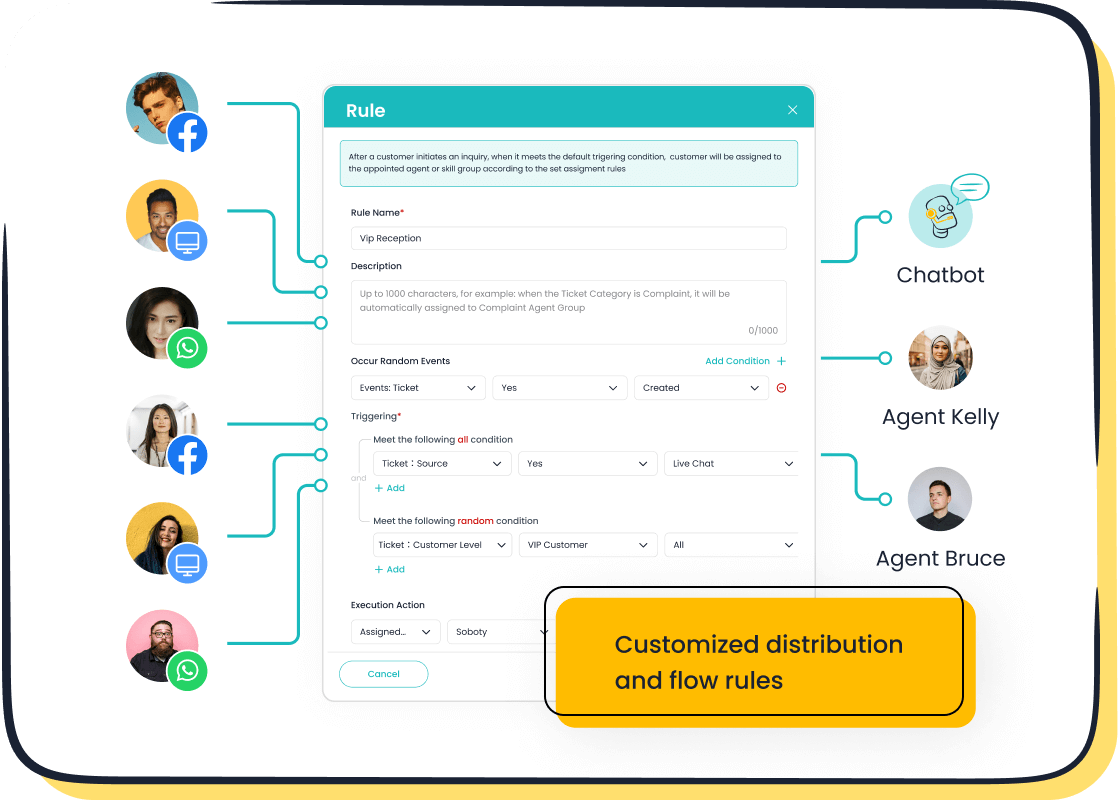
Businesses like Sobot leverage these innovations to optimize customer retention and satisfaction. For instance, Sobot Live Chat integrates AI tools to unify conversations across channels, ensuring timely responses and personalized engagement. Such solutions help businesses meet rising expectations, as studies show 88% of customers will make repeat purchases when satisfied.
📊 Did you know? Poor service costs U.S. companies $75 billion annually, while 50% of customers are willing to pay more for exceptional service.
Emerging Technologies Driving Customer Retention and Satisfaction

AI-Powered Solutions for Enhanced CX
Artificial intelligence (AI) has revolutionized how businesses approach customer experience. By leveraging AI, you can deliver faster, more personalized interactions that meet customer expectations. AI-powered tools like chatbots provide 24/7 support, ensuring instant responses to routine queries. This not only reduces response times by up to 60% but also allows your agents to focus on complex issues, improving overall productivity. For example, Telenor's implementation of an AI virtual agent achieved significant improvements in customer satisfaction and operational efficiency within just one year.
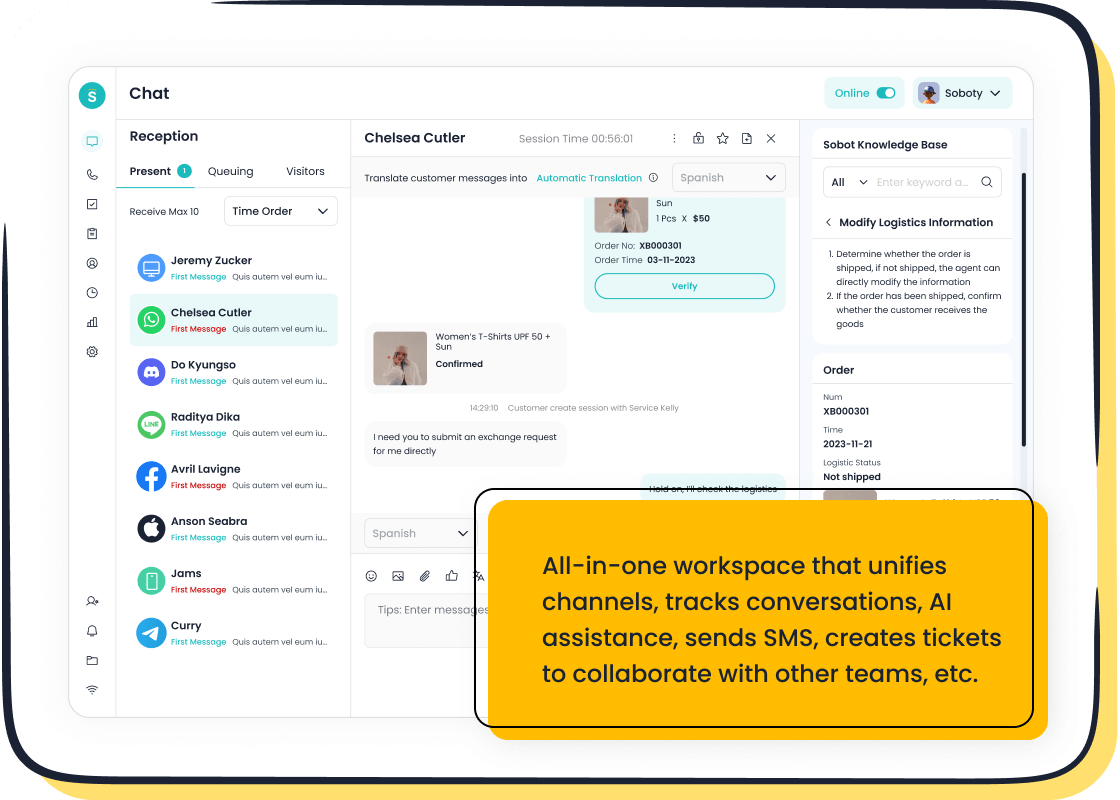
AI also enhances personalization by analyzing customer data to offer tailored recommendations. Companies like Netflix and Spotify use AI to suggest content, with Netflix attributing 80% of its watched content to AI-driven recommendations. These strategies not only improve customer satisfaction but also reduce churn rates significantly. Sobot's AI solutions, including its Live Chat platform, integrate these capabilities seamlessly, enabling you to provide personalized, efficient, and engaging customer experiences across multiple channels.
💡 Tip: AI-driven automation can also boost conversion rates by 25% through targeted campaigns and personalized offers.
Automation and Generative AI in Customer Support
Automation and generative AI are transforming customer service trends by streamlining operations and enhancing efficiency. Automated workflows handle repetitive tasks, such as ticket routing and follow-ups, freeing up your team to focus on more meaningful interactions. Generative AI, powered by advanced language models, enables you to create human-like responses, summaries, and even proactive outreach messages.
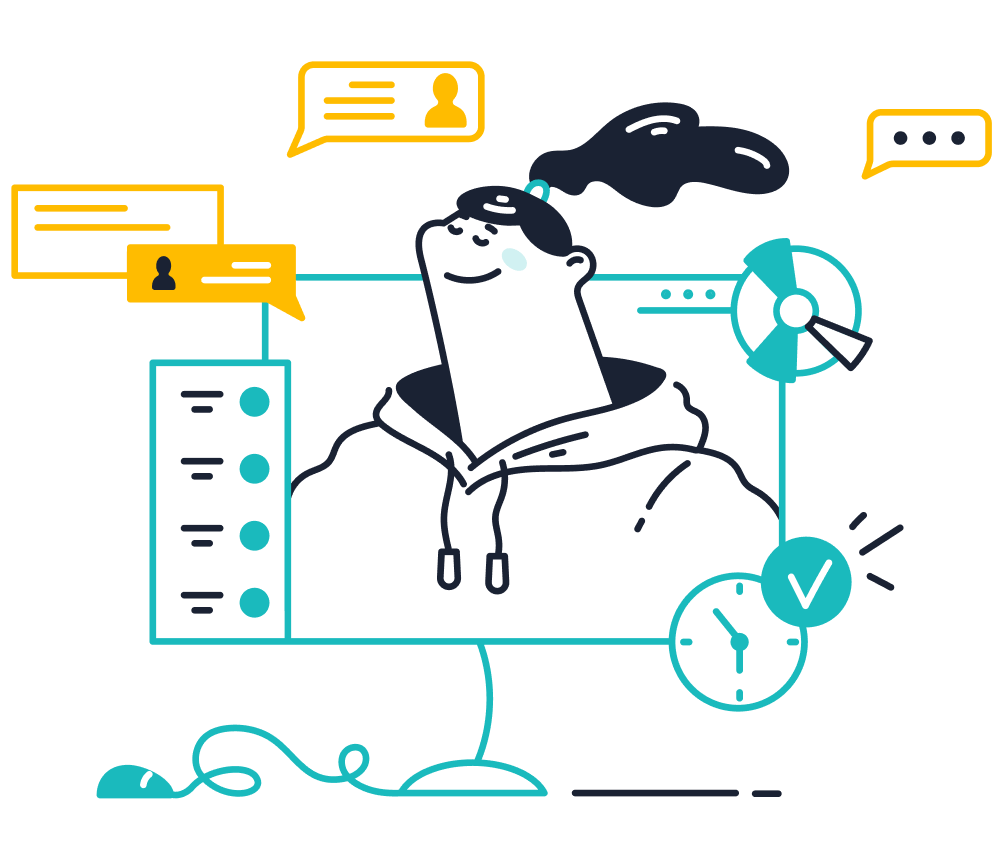
Metrics like Customer Satisfaction Score (CSAT) and Net Promoter Score (NPS) highlight the impact of automation. Studies show a 15-25% improvement in these scores when businesses adopt AI-driven automation. Additionally, support ticket volumes decrease by 20-30%, while agent productivity sees significant gains. Sobot's Live Chat platform exemplifies this trend by combining automation with AI tools to unify conversations, optimize workflows, and ensure timely responses.
Generative AI also plays a key role in proactive engagement. For instance, Starbucks uses AI to deliver personalized promotions, resulting in a 20% increase in customer engagement. By adopting similar strategies, you can enhance customer retention and satisfaction while staying ahead of emerging trends.
Predictive Analytics for Proactive Engagement
Predictive analytics empowers you to anticipate customer needs and take proactive measures to enhance their experience. By analyzing historical data, you can identify patterns and predict future behaviors, such as churn risk or purchasing intent. This allows you to address potential issues before they arise, improving customer retention and satisfaction.
Key metrics like churn rate, average response time, and social media engagement provide valuable insights into customer behavior. For example, monitoring churn risk helps you identify at-risk customers and implement targeted retention strategies. Predictive analytics also enables you to optimize marketing campaigns, reducing cart abandonment and increasing sales.
Sobot's AI solutions incorporate predictive analytics to help you stay ahead of customer expectations. By leveraging these tools, you can deliver proactive, personalized experiences that foster loyalty and drive long-term success.
Personalization and Proactive Engagement in CX
Hyper-Personalization with Data Insights
Hyper-personalization has become a cornerstone of modern customer experience strategies. By leveraging advanced data insights, you can create tailored experiences that resonate with individual preferences. This approach goes beyond basic personalization by using real-time data and AI to deliver highly specific recommendations and services.
For instance, the shift from rule-based personalization to AI-powered solutions has revolutionized targeting efficiency. Companies now integrate personalization across multiple channels, ensuring a seamless customer journey. Real-time data usage allows you to adjust campaigns dynamically, meeting customer expectations as they evolve. The table below highlights key trends driving hyper-personalization:
| Insight | Description |
|---|---|
| Shift to AI | The market is moving from rule-based personalization to AI-powered solutions. |
| Data Privacy | Transparent data practices set ethical standards for AI. |
| Multi-channel Integration | Personalization spans various channels for a cohesive customer journey. |
| Real-time Data Use | Agile campaign adjustments based on customer behavior. |
| Key Drivers | Consumer demand, AI advancements, and improved analytics fuel the trend. |

Sobot's Live Chat exemplifies these trends by offering omnichannel support and AI-driven tools. It enables you to provide personalized service across platforms like WhatsApp, Facebook, and Instagram. With features like customer segmentation and built-in analytics, Sobot empowers you to deliver hyper-personalized interactions that boost customer satisfaction and retention.
📊 Did you know? 82% of consumers say personalized experiences influence their brand choice in at least half of shopping situations. Additionally, 61% are willing to spend more with companies that customize their service.
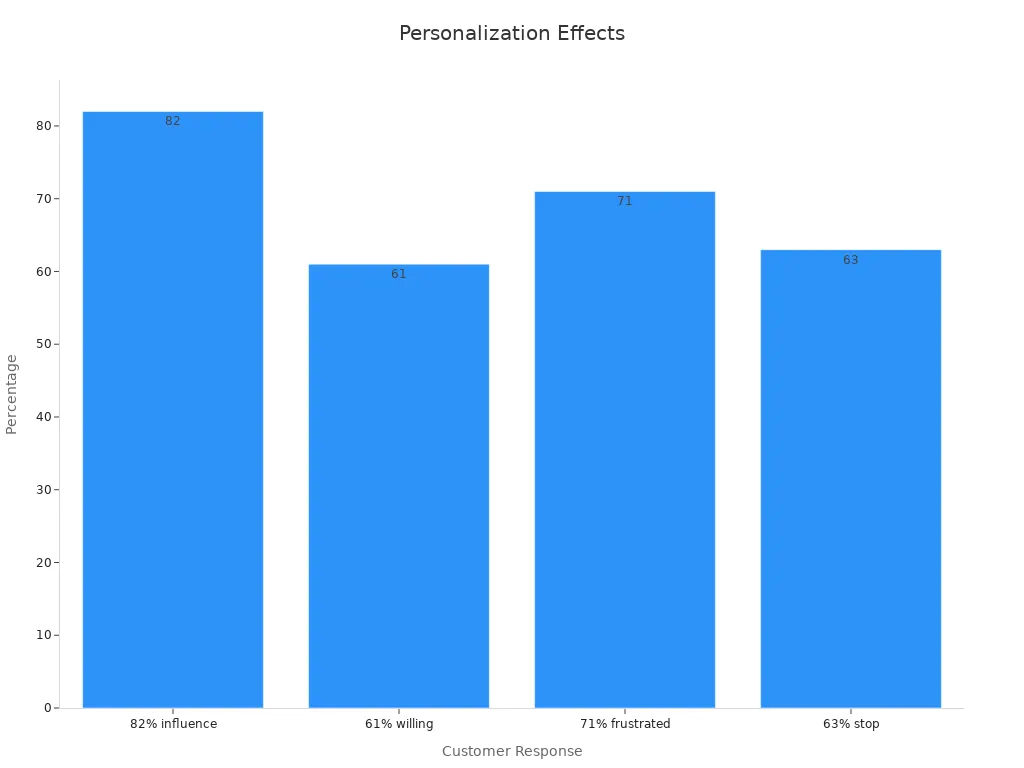
Proactive Customer Service Strategies
Proactive customer service has emerged as a critical trend in enhancing customer retention and satisfaction. By anticipating customer needs and addressing potential issues before they arise, you can create a seamless and engaging customer experience. This approach not only improves satisfaction but also strengthens loyalty.
Metrics like Customer Retention Rate (CRR) and Net Promoter Score (NPS) highlight the effectiveness of proactive strategies. For example:
| Metric | Description |
|---|---|
| CRR | Indicates long-term customer relationship health. |
| NPS | Measures loyalty and satisfaction, predicting retention likelihood. |
| Churn Rate | Shows the percentage of customers lost, inversely related to retention success. |
Proactive customer engagement involves actions like sending reminders, offering personalized promotions, or resolving issues before customers report them. Starbucks, for instance, uses AI to deliver proactive promotions, achieving a 20% increase in customer engagement. Similarly, Sobot's AI solutions enable you to implement proactive customer service strategies by leveraging predictive analytics and automation. These tools help you identify at-risk customers and take timely actions to retain them.
💡 Tip: Companies that utilize proactive customer service strategies often report higher retention rates and improved customer satisfaction.
Leveraging Sobot Live Chat for Tailored Interactions

Sobot Live Chat stands out as a powerful tool for delivering personalized and proactive customer experiences. Its omnichannel capabilities allow you to engage with customers on their preferred platforms, ensuring no interaction goes unnoticed. By unifying conversations across channels, Sobot Live Chat helps you maintain consistency and efficiency.
Key features like customer segmentation and AI-assisted tools enable you to provide tailored interactions. For example, the platform's intelligent assignment feature ensures that inquiries are routed to the most suitable agent, enhancing resolution times. Built-in analytics offer insights into customer behavior, allowing you to refine your strategies and deliver advanced personalization.
Sobot Live Chat also supports proactive customer engagement by enabling real-time communication and automated follow-ups. With a 38% gain in conversion rates, the platform demonstrates its effectiveness in turning visitors into loyal customers. By integrating Sobot Live Chat into your customer service framework, you can elevate your CX and foster long-term relationships.
Omnichannel and Immersive Customer Experiences
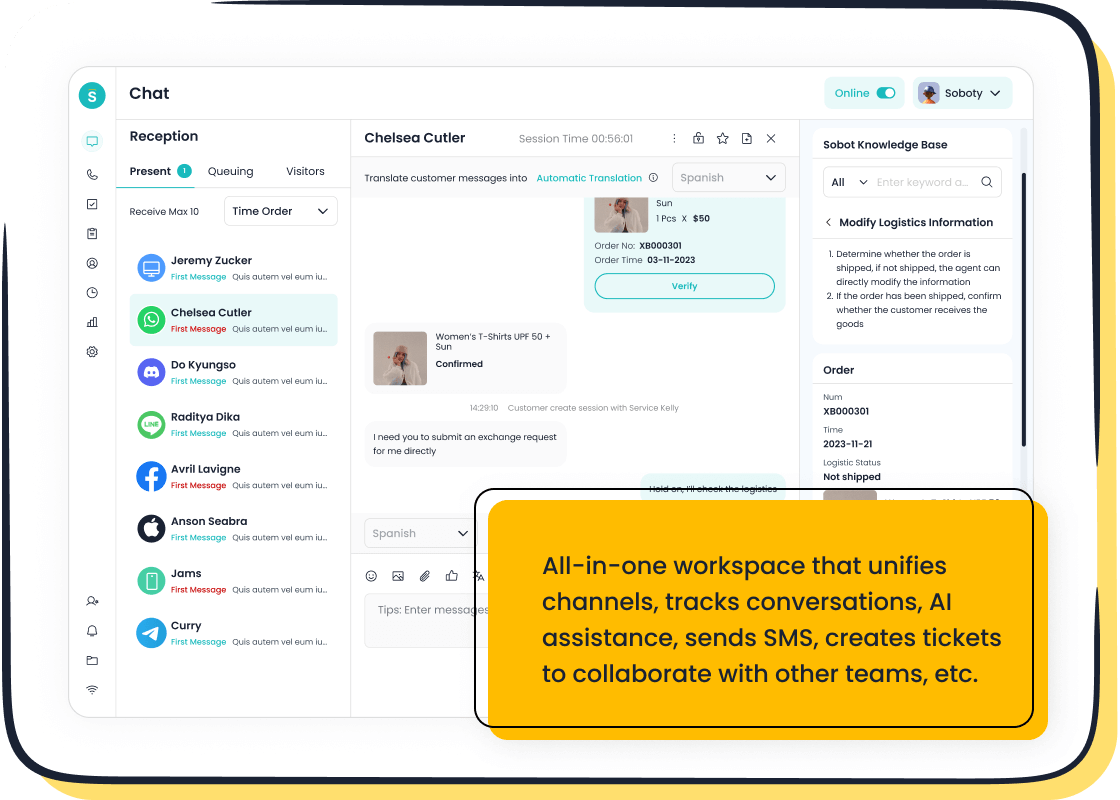
Seamless Omnichannel Integration with Sobot Solutions
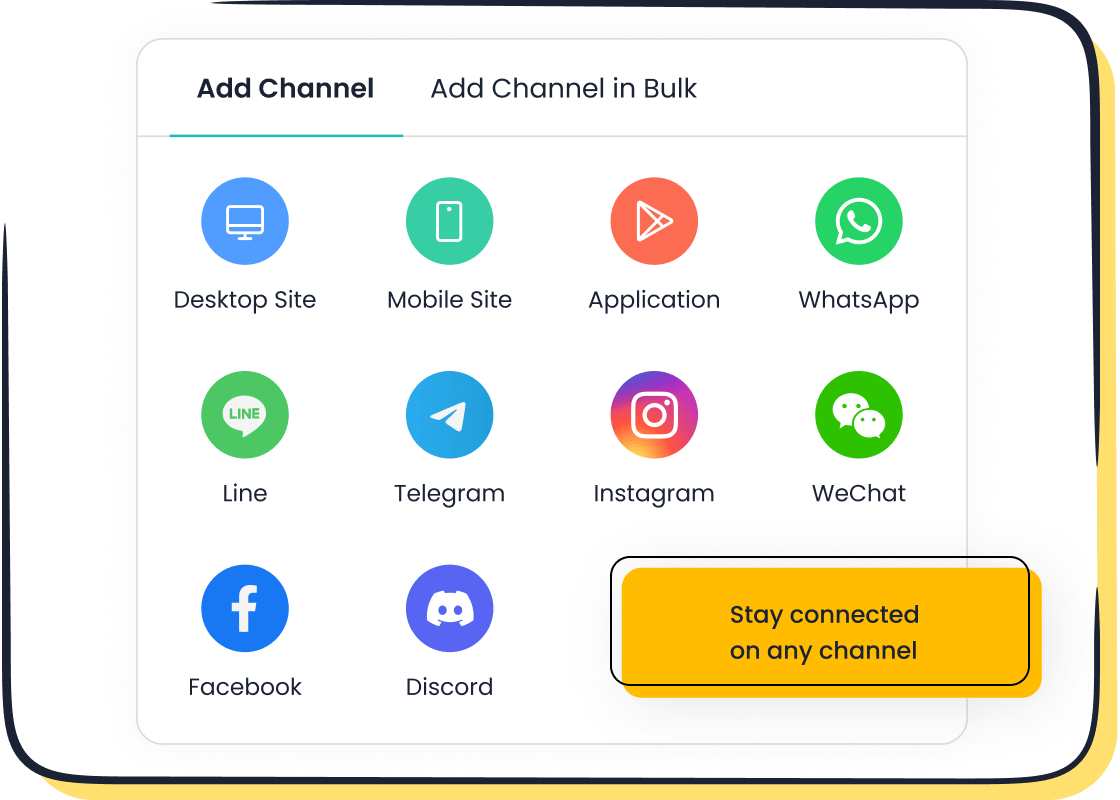
A seamless omnichannel strategy ensures that customers experience consistent service across all platforms. Businesses using omnichannel solutions can unify communication channels, making interactions more efficient and personalized. For example, Sobot's Live Chat integrates platforms like WhatsApp, Facebook, and Instagram into a single workspace. This allows agents to manage inquiries without switching systems, improving response times and customer satisfaction.
Samsung's adoption of Sobot's omnichannel solutions highlights the benefits. The company achieved a 30% increase in agent efficiency and a 97% customer satisfaction score. By integrating various channels, Samsung enhanced customer convenience and engagement. These results demonstrate how omnichannel experiences can drive loyalty and retention.
| Benefit | Description |
|---|---|
| High customer retention and loyalty | Omnichannel experiences provide a complete picture of the customer across multiple channels. |
| Supports multi-channel engagement | 51% of companies use at least eight channels to interact with customers. |
| Consistent customer experience | Creates a consistent experience across channels, reducing customer effort. |
| Increased revenue | Positive experiences lead to higher customer engagement and more sales opportunities. |
AR/VR for Immersive Customer Interactions
Augmented reality (AR) and virtual reality (VR) are transforming customer experiences by offering interactive and engaging solutions. Nearly 60% of the U.S. population is expected to use AR frequently by 2025. Retailers using AR have reported a 90% lift in conversion rates among AR users compared to non-AR users. These technologies allow customers to visualize products in real-world settings, making purchase decisions easier.
The global AR and VR market, valued at $14.84 billion in 2020, is projected to reach $454.73 billion by 2030. This growth reflects the increasing adoption of immersive technologies in customer interactions. For instance, 80% of retailers plan to integrate AR into their customer experience strategies by 2025. Sobot's solutions can complement these advancements by providing omnichannel support, ensuring that AR/VR interactions align with broader customer engagement efforts.
| Key Findings | Description |
|---|---|
| Study Focus | Examined both AR and VR technologies in commercial shopping environments. |
| Consumer Perception | Identified differences in consumer behavioral responses to AR vs. VR. |
| Implications | Provides valuable insights for brands on technology implementation strategies. |
Voice Interaction Technologies and Conversational AI
Voice interaction technologies and conversational AI are reshaping how businesses communicate with customers. These tools improve service efficiency by enabling faster, more natural interactions. Metrics like call duration and first call resolution rate highlight their impact. Shorter calls and higher resolution rates indicate effective problem-solving, leading to better customer experiences.
Sobot's AI solutions include voice capabilities that enhance customer interactions. Features like real-time speech recognition and sentiment analysis allow businesses to assess communication effectiveness. For example, Voice Experience Scoring evaluates agent performance based on clarity and issue resolution. By incorporating these technologies, you can streamline operations and improve customer satisfaction.
| Metric | Impact on Customer Service Efficiency |
|---|---|
| Call Duration | Shorter call durations indicate more efficient interactions. |
| First Call Resolution Rate | Higher rates suggest effective problem-solving on the first contact. |
| Sentiment Analysis | Positive sentiment correlates with improved customer satisfaction. |
💡 Tip: Combining voice interaction technologies with an omnichannel strategy ensures a cohesive and efficient customer experience.
Building Trust and Security in Customer Relationships
Data Privacy and Compliance Standards
Protecting customer data is essential for building trust and privacy in your customer relationships. Adhering to regulatory standards ensures that sensitive information remains secure while demonstrating your commitment to ethical practices. Regulations like GDPR, HIPAA, and CCPA set benchmarks for data protection, requiring businesses to implement robust security measures. For example, GDPR governs data privacy in the EU, imposing fines of up to 10 million euros for non-compliance. Similarly, HIPAA safeguards medical information in the U.S., with penalties reaching $1.5 million annually.
| Regulation | Description | Penalties for Non-Compliance |
|---|---|---|
| GDPR | Governs data protection and privacy in the EU, giving individuals control over their personal data. | Fines up to 10 million euros or 2% of annual revenue. |
| HIPAA | Protects medical personal information in the U.S. | Penalties range from $10,000 to $50,000 per violation, with a maximum of $1.5 million annually. |
| CCPA | Enhances privacy rights for California residents, requiring transparency in data practices. | Non-compliance can lead to significant fines. |
| PCI DSS | Governs the handling of credit card information, requiring strict security measures. | Fines from $5,000 to $100,000 per month until compliance is achieved. |
| SOX | Mandates practices in financial record-keeping to protect investors. | Non-compliance can lead to severe penalties affecting financial stability. |
Despite these regulations, 87% of global companies struggle to align their practices with GDPR, and 92% report increased operational expenses due to compliance efforts. By exceeding basic requirements, you can enhance customer trust and loyalty while safeguarding your brand reputation.
Transparency as a Trust-Building Strategy
Transparency plays a vital role in fostering customer trust. When you openly share information about pricing, policies, and practices, customers feel more confident in their decision to engage with your brand. Studies show that 94% of consumers are more likely to remain loyal to brands that offer complete transparency. Additionally, 73% are willing to pay more for products when they believe the company is honest about its pricing.
Costco serves as a prime example of transparency in action. With 87% of shoppers expressing trust in its pricing compared to competitors, the company has built a loyal customer base. Transparent practices also reduce churn, as customers are 30% more likely to make repeat purchases from brands they trust. By integrating transparency into your customer journey, you can strengthen relationships and drive long-term loyalty.
💡 Tip: Transparent pricing and policies not only enhance customer trust but also differentiate your brand in competitive markets.
Cybersecurity Measures for Customer Data Protection
Robust cybersecurity measures protect customer data and reinforce trust in your brand. Advanced technologies like encryption and multi-factor authentication (MFA) prevent unauthorized access, ensuring sensitive information remains secure. Continuous authentication verifies user identities throughout sessions, while regular vulnerability assessments identify and address potential risks.
Implementing a breach response plan further demonstrates your commitment to customer trust and privacy. Compliance with regulations like GDPR and HIPAA enhances your credibility, showing customers that their data is in safe hands. For example, encryption keeps data unreadable during transit and storage, while MFA adds an extra layer of security against breaches.
- Protect customer data with advanced security technologies.
- Train employees on cybersecurity risks and data handling.
- Develop a clear privacy policy.
- Implement a breach response plan.
Effective communication of your security initiatives can also boost customer confidence. When customers know their data is protected, they are more likely to trust your brand and remain loyal throughout their customer journey.
Human-Centric Approaches to Customer Satisfaction
Balancing AI Efficiency with Human Empathy
AI has transformed customer service by automating repetitive tasks and providing instant responses. However, balancing AI efficiency with human empathy is essential for creating meaningful customer experiences. While AI tools like chatbots can resolve routine queries quickly, human agents bring emotional intelligence and understanding to complex interactions. This combination ensures that customers feel valued and heard.
Metrics such as First Contact Resolution (FCR) and Customer Satisfaction (CSAT) highlight the importance of blending AI with human support. For instance, companies that integrate AI into their customer service operations report a 61% improvement in customer experience. As Graeme Provan, global director of business automation at Genesys, explains, "A blended AI approach where automation can help the human be more human is most ideal." By leveraging AI for efficiency and human agents for empathy, you can enhance CX and build stronger relationships.
Employee Training for Enhanced CX
Well-trained employees play a crucial role in delivering exceptional customer experiences. Training programs equip your team with the skills needed to handle diverse customer needs effectively. Ongoing learning opportunities keep employees updated on industry trends, while peer-to-peer learning fosters collaboration and knowledge-sharing.
Research shows that 85% of decision-makers believe employee satisfaction directly impacts customer experience. When employees feel supported and confident, they are more likely to provide outstanding service. Regular feedback from customers and peers also helps identify areas for improvement, ensuring continuous growth. By investing in employee training, you can empower your team to deliver superior CX and adapt to evolving trends.
Emotional Intelligence in Customer Interactions
Emotional intelligence (EI) is a critical component of successful customer interactions. It enables your team to manage emotions—both their own and those of customers—leading to positive and empathetic engagements. Empathy, a key aspect of EI, helps your agents understand and resonate with customers' feelings, fostering deeper connections.
Studies reveal that EI correlates with adaptability and job performance. Employees with high EI adjust better to job demands and excel in customer-facing roles. For example, fostering empathy in your team can enhance customer satisfaction and loyalty. By prioritizing EI in your customer service strategy, you can create meaningful interactions that leave a lasting impression.
📊 Key Findings:
| Evidence Description | Key Findings |
|----------------------|--------------|
| Emotional intelligence (EI) enables employees to manage their own and customers' emotions | Fosters positive interactions, enhances customer satisfaction and loyalty |
| EI correlates with adaptability and job performance | Individuals with high EI adjust better to job demands and perform effectively |
| Empathy is a critical component of EI in customer service | Empathy helps in understanding and resonating with clients' emotions, leading to deeper connections |
To excel in customer retention and satisfaction, you must embrace emerging trends like AI and omnichannel solutions. By 2025, 85% of customer interactions will occur without human intervention, and companies adopting AI see a 25% boost in satisfaction. Tools like Sobot Live Chat unify communication channels, enabling faster query resolution and personalized engagement. Businesses using omnichannel strategies retain 89% of customers, compared to 33% for weaker approaches. These trends not only improve customer loyalty but also drive profitability, with strong CX strategies delivering 1.5x higher revenue growth.
Sobot’s solutions, such as its AI-powered Live Chat, enhance efficiency by resolving queries 30% faster and reducing operational costs by up to 25%. By integrating these tools, you can stay ahead of trends, foster stronger relationships, and secure long-term success in a competitive market.
FAQ
What is Sobot Live Chat, and how does it improve customer satisfaction?
Sobot Live Chat is a platform that unifies customer conversations across channels. It ensures timely responses, personalized interactions, and seamless communication. By using AI tools, it boosts agent efficiency and enhances customer satisfaction, leading to a 38% increase in conversion rates.
How does Sobot ensure data security for customer interactions?
Sobot employs advanced security measures like encryption, GDPR compliance, and continuous backups. These features protect sensitive customer data and ensure compliance with global privacy standards. You can trust Sobot to safeguard your information while delivering exceptional service.
Can Sobot Live Chat integrate with other systems?
Yes, Sobot Live Chat integrates seamlessly with various systems, including ERP and ticketing platforms. This integration connects customer records, enabling agents to provide efficient and personalized service. It also simplifies workflows and enhances collaboration across teams.
What industries benefit most from Sobot’s solutions?
Sobot serves diverse industries like retail, finance, gaming, and education. Its tools cater to businesses needing omnichannel communication, AI-powered support, and operational efficiency. Companies like Samsung and Luckin Coffee have achieved remarkable results using Sobot’s solutions.
Does Sobot offer a free trial for its Live Chat platform?
Yes, Sobot Live Chat provides a free trial. You can explore its features, such as omnichannel support, AI tools, and analytics, before committing. Visit Sobot Live Chat to start your free trial today! 🚀
See Also
Enhancing Customer Satisfaction Through Effective Live Chat Strategies
Best Voice of Customer Tools to Use in 2024
Comparative Analysis of Leading Voice of Customer Software
Leading Customer Service Software Options for 2024
Increasing E-commerce Customer Satisfaction with Chatbot Technology
